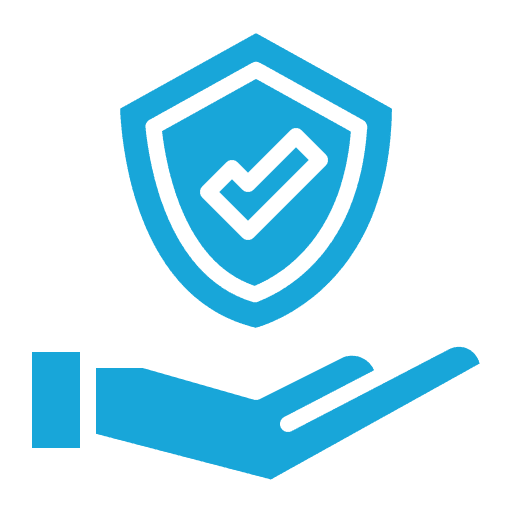
Immediate Help and Support
Whether you’re ready to start treatment or exploring your options, these trusted resources can help:
Legacy Healing Center: Call (888) 534-2295 to speak confidentially with an alcohol addiction specialist.
SAMHSA National Helpline: Dial 1‑800‑662‑HELP (4357) – 24/7 support for individuals and families.
988 Suicide & Crisis Lifeline: Dial 988 for immediate help in a mental health or substance-related crisis.
You’re not alone—support is just one step away.
Key Takeaways
- Ketamine addiction is a substance use disorder recognized by the DSM-5 and the National Institute on Drug Abuse (NIDA).
- Ketamine is a Schedule III dissociative anesthetic classified by the DEA, used medically for anesthesia and treatment-resistant depression, but often misused recreationally.
- Addiction progression typically follows: initial use → tolerance → psychological dependence → withdrawal → compulsive use.
- Health risks include memory loss, bladder damage (“ketamine bladder”), depression, anxiety, and increased risk of accidents or overdose.
- Polydrug use (mixing ketamine with alcohol, opioids, or benzodiazepines) greatly increases the risk of respiratory depression and death.
- Treatment options include medical detox, cognitive behavioral therapy (CBT), motivational interviewing, dual diagnosis treatment, and long-term aftercare.
- Recovery is possible with professional help from accredited ketamine treatment centers like Legacy Healing Center.
What is Ketamine?
Ketamine is a dissociative anesthetic in the arylcyclohexylamine class that doctors, hospitals, and mental health clinics use for anesthesia, pain management, and treatment-resistant depression. Originally developed in the 1960s for surgical anesthesia, ketamine is recognized by the World Health Organization (WHO) as an essential medicine. Its early use as a cat tranquilizer and on battlefields during the Vietnam War demonstrated both its medical benefits and its addictive potential.
In the U.S., the Drug Enforcement Administration (DEA) classifies ketamine as a Schedule III controlled substance because it has accepted medical uses but also carries risks for abuse and psychological dependence. In clinical settings, ketamine may be administered intravenously, intramuscularly, or as an intranasal spray, including the FDA-approved formulation esketamine (Spravato®) for depression. This FDA approval marked a milestone in ketamine treatment, as many patients now receive the nasal spray version under strict supervision to treat depression. This ketamine approved nasal spray highlights how certain formulations are FDA approved for medical treatment, while unsupervised use remains dangerous.
What is Ketamine Addiction and Why is Ketamine Addictive?
Ketamine addiction is a substance use disorder recognized by the National Institute on Drug Abuse (NIDA) and the Diagnostic and Statistical Manual of Mental Disorders (DSM-5), in which repeated misuse of ketamine — a Schedule III dissociative anesthetic classified by the Drug Enforcement Administration (DEA) and originally developed for surgical anesthesia — leads to cravings, tolerance, withdrawal symptoms, and compulsive use despite harmful consequences.
Unlike supervised medical treatments for anesthesia or treatment-resistant depression, recreational ketamine use often results in psychological dependence, bladder damage, memory loss, and co-occurring mental health issues such as anxiety and depression. Taking ketamine repeatedly in unsupervised ketamine settings can also lead to ketamine induced uropathy, difficulty speaking, and blurred vision, which highlight the serious psychological consequences of misuse. Effective treatment typically involves medical detoxification, behavioral therapies such as cognitive behavioral therapy (CBT) and motivational interviewing, and long-term aftercare provided at accredited addiction treatment centers like Legacy Healing Center.
Psychological vs. Physical Dependence
- Psychological Dependence: Cravings, anxiety, and obsessive thoughts about using ketamine.
- Physical Dependence: Tolerance, withdrawal symptoms, and reliance on higher doses to achieve effects.
Medical Use vs. Recreational Use
- Medical Use: Carefully measured doses, administered by professionals in monitored environments.
- Recreational Use: Taken without supervision (snorted, smoked, or injected) for its “high” — greatly increasing risk of misuse and addiction.
| Medical Use of Ketamine | Recreational Use of Ketamine |
| Administered by professionals in controlled doses | Taken without medical supervision, often snorted, injected, or smoked |
| Used for anesthesia, pain relief, or depression treatment | Used for hallucinations, euphoria, or dissociation |
| Carefully monitored for safety | High risk of overdose, addiction, and dangerous behaviors |
| Short-term benefits in treatment settings | Long-term risks: memory loss, bladder damage, psychological dependence |
What are the Effects of Ketamine on the Brain & Body?
Ketamine works primarily as an NMDA receptor antagonist, blocking receptors in the brain that regulate memory, mood, and pain perception. This disruption produces dissociative effects — detachment from reality, body, or surroundings. The acute effects of ketamine include dissociative effects such as near-death experience sensations and a state known as a K-hole, which is often reported when people take ketamine recreationally and can be frightening and disorienting.
Short-Term Effects of Ketamine Use
- Hallucinations and altered perception
- Euphoria or relaxation
- Impaired coordination and slurred speech
- Detachment (“K-hole”)
Long-Term Risks
- Memory loss and cognitive decline
- Anxiety, depression, and dependence
- Neurological damage
- Bladder and organ problems
How Ketamine Addiction Develops
Like many addictive substances, ketamine addiction often develops gradually. What may start as medical treatment or occasional recreational use can progress into compulsive drug-seeking behavior.
- Initial Use: Ketamine is first used for medical reasons (anesthesia, depression) or recreationally at parties.
- Tolerance: Over time, the body adapts, requiring higher doses to feel the same effects.
- Psychological Dependence: Users begin craving the dissociative escape ketamine provides and feel they cannot cope without it.
- Physical Dependence: Withdrawal symptoms such as anxiety, insomnia, and depression emerge when use is stopped.
- Compulsive Use: Despite negative health, social, or legal consequences, the person continues to use ketamine.
⚠️ Addiction develops through changes in the brain’s dopamine reward pathway and disrupted glutamate signaling. These changes reinforce ketamine-seeking behavior, making recovery difficult without professional treatment.
Signs & Symptoms of Ketamine Addiction
Recognizing ketamine addiction can be difficult. Symptoms often overlap with mental health issues or other substance use.
Behavioral Signs
- Cravings and preoccupation
- Loss of control
- Continued use despite harm
Physical Signs
- Slurred speech and impaired coordination
- Memory problems
- Bladder damage (“ketamine bladder”)
- Tolerance and withdrawal
Psychological Signs
- Dissociation
- Anxiety and depression
- Dependence on ketamine to cope
Clinical Assessment of Ketamine Addiction
Doctors diagnose ketamine use disorder using the DSM-5 criteria, which assess:
- Patterns of repeated use
- Loss of control or inability to cut back
- Development of tolerance and withdrawal
- Continued use despite harmful effects on health, relationships, or responsibilities
⚠️ A formal assessment often includes a medical evaluation (checking for bladder, cognitive, or cardiovascular complications) and a mental health evaluation for co-occurring disorders like depression or PTSD.
Dangers, Adverse Effects & Health Risks of Ketamine Abuse
Ketamine misuse may seem less risky than “harder drugs,” but it can have serious, lasting consequences.
Immediate Risks
- Accidents and injuries
- Impaired judgment
- Overdose (unconsciousness, breathing suppression)
Long-Term Physical Risks
- Memory loss and confusion
- Organ and liver damage
- Urinary tract issues (pain, incontinence)
- Tolerance and dependence
Mental Health Impacts
- Anxiety and depression
- Paranoia and hallucinations
- Suicidal thoughts
⚠️ Suicidal thinking and mood changes are often intensified in people who are taking ketamine in combination with other drug use, especially in party environments.
Signs of Ketamine Overdose
A ketamine overdose occurs when someone takes too much of the drug, overwhelming the body’s ability to process it safely. Unlike mild dissociative effects, a ketamine overdose can quickly become a medical emergency.
Common signs of ketamine overdose include:
- Extreme confusion or disorientation
- Loss of consciousness or falling into a deep “K-hole”
- Shallow breathing or slowed respiratory rate
- High blood pressure or dangerous fluctuations in blood pressure
- Difficulty speaking, blurred vision, or inability to move normally
- Severe dissociation resembling a near death experience
Mixing Ketamine with Other Substances
⚠️ Important Risk: Many ketamine-related ER visits involve polydrug use, making supervised medical treatment critical for safety.
Combining ketamine with alcohol, opioids, or benzodiazepines significantly increases the risk of:
- Respiratory depression and slowed breathing
- Blackouts or unconsciousness
- Overdose and death
⚠️ If a ketamine overdose is suspected, emergency medical attention is critical.
Ketamine Addiction as a Public Health Concern
Ketamine misuse has been steadily rising in both medical and recreational contexts. Research from the National Institute on Drug Abuse (NIDA) and Substance Abuse and Mental Health Services Administration (SAMHSA) highlights several concerning trends:
- Youth use increasing: In the UK, ketamine use among 16–24-year-olds has nearly quadrupled since 2015.
- ER visits rising: Emergency department visits in the U.S. linked to ketamine abuse have grown significantly, often due to bladder complications and overdose.
- Polydrug involvement: Many ketamine-related hospitalizations involve mixing with alcohol, opioids, or benzodiazepines.
- High mental health overlap: An estimated 75–85% of people with ketamine addiction also struggle with depression, anxiety, or trauma.
⚠️ Ketamine addiction is not only a personal health risk — it is also a growing public health issue that requires awareness, early intervention, and specialized treatment.
Ketamine Addiction Statistics and Risk Comparison Table
| Metric | Ketamine | Alcohol | Opioids | Cocaine |
| Time to Addiction Development | 2-8 weeks with frequent use | 6-12 months | 2-4 weeks | 1-3 months |
| Treatment Success Rate (1 year) | 65-70% with specialized care | 45-55% | 40-60% | 50-65% |
| Overdose Risk (per use) | Moderate (higher with alcohol) | Low-Moderate | Very High | High |
| Physical Withdrawal Severity | Mild-Moderate | Severe | Very Severe | Mild |
| Psychological Dependence Risk | High | High | Very High | Very High |
| Medical Complications | Bladder damage, memory loss | Liver damage, heart disease | Respiratory failure, infection | Heart attack, stroke |
| Co-occurring Mental Health | 75-85% | 60-70% | 70-80% | 65-75% |
| Relapse Rate (first year) | 30-35% | 40-60% | 50-90% | 45-65% |
Source: Compiled from addiction medicine research and treatment outcome studies
Ketamine Withdrawal Symptoms
Ketamine withdrawal is often more psychological than physical, but it can still be overwhelming.
Symptoms
- Anxiety, restlessness, insomnia
- Depression and low mood
- Strong cravings
- Sweating, tremors, rapid heartbeat
Timeline
- 0–3 days: Anxiety, cravings, sleep problems
- First week: Mood swings, depression, memory issues
- Weeks–Months: Persistent cravings, ongoing depression
Why Medical Supervision Matters
Detoxing without help can increase relapse risk. Supervised detox ensures:
- Symptom management and comfort
- Therapy support for dependence
- Medication when appropriate
- A safe, structured recovery start
Ketamine Addiction Treatment Options
Recovery requires a comprehensive, evidence-based plan addressing both body and mind. At Legacy Healing, ketamine rehab programs are tailored to address not only the adverse effects of drug use but also co-occurring conditions like post traumatic stress disorder, ensuring that ketamine treatment integrates both medical and psychological care.
Medical Detox
- Safe withdrawal monitoring
- Relapse prevention support
- Medications for cravings and sleep
Behavioral Therapies
- CBT to change negative thought patterns
- Motivational Interviewing to inspire change
- Group Therapy for peer support
Dual Diagnosis Treatment
Addresses co-occurring depression, anxiety, or trauma alongside substance use.
Aftercare
- Relapse prevention planning
- Support groups and family therapy
- Sober living and long-term recovery support
⚠️ Legacy Healing Center offers comprehensive treatment for ketamine addiction — from medical detox to therapy and aftercare. Call us today to begin your recovery journey.
Common Mistakes to Avoid in Ketamine Addiction Treatment
Not all treatment approaches are equally effective for ketamine addiction. Avoiding these common mistakes can improve recovery outcomes:
- Ignoring underlying mental health issues: Many people use ketamine to cope with depression, anxiety, or trauma. If these conditions are not treated alongside the addiction, relapse is more likely.
- Attempting unsupervised detox: While ketamine withdrawal is less physically dangerous than opioids or alcohol, symptoms like severe depression, suicidal thoughts, and cardiovascular strain can make self-detox unsafe.
- Focusing only on physical dependence: Because ketamine’s primary addiction mechanism is psychological, treatment that ignores cravings and emotional triggers often fails.
- Choosing generalized programs: Some facilities lack experience with dissociative drug addictions. Specialized programs provide better outcomes.
⚠️ Seek care from accredited addiction treatment centers with dual diagnosis expertise to ensure both addiction and mental health are addressed.
Real-Life Recovery Story
“Sarah,” a 22-year-old college student, began using ketamine at parties. Within six months, she was using daily, experiencing bladder pain, and failing academically. After entering treatment at an accredited recovery center, Sarah completed medical detox, cognitive behavioral therapy, and family counseling. Today, she is sober, back in school, and thriving with ongoing therapy and peer support.
Ketamine in Medicine: Medical Treatment vs. Party Drug Misuse
Ketamine has legitimate medical uses — but misuse blurs the line between therapy and harm.
Medical Uses
- Anesthesia
- Chronic pain management
- Treatment-resistant depression (under supervision)
⚠️ Some doctors also use ketamine off-label in clinical settings, though ketamine approval by the Food and Drug Administration (FDA) only applies to specific indications such as esketamine for depression.
Risks of Misuse
- Self-medicating with illegal ketamine
- Overuse in clinics without monitoring
- Dependency from repeated unsupervised treatments
Supervised vs. Abuse
- Safe: Controlled doses under medical supervision
- Abuse: Recreational or self-administered use, often leading to addiction
Ketamine Approved Uses and Legal Classification
In the U.S., ketamine is tightly regulated.
Controlled Substance Status
- Classified as a Schedule III controlled substance by the DEA
- Recognized medical use, but high risk of abuse
Legal vs. Illegal Use
- Legal: Prescribed/administered by licensed providers
- Illegal: Possession, use, or trafficking without prescription
Risks of Misuse
Illegal possession or trafficking can lead to fines, imprisonment, or loss of privileges — alongside health risks.
Legacy Healing Center’s Approach to Ketamine Addiction
At Legacy Healing, we know every person’s journey is unique. Our programs combine medical care, evidence-based therapy, and long-term support to guide clients toward recovery.
- Evidence-Based Programs: CBT, Motivational Interviewing, and group therapy.
- Personalized Care Plans: Detox, inpatient, outpatient, or dual diagnosis tailored to each client.
- Medical Oversight: 24/7 monitoring during detox and treatment.
- Long-Term Recovery: Aftercare, relapse prevention, and family healing.
Take the first step toward recovery. Call Legacy Healing Center for ketamine addiction treatment today.
Finding Hope & Healing from Ketamine
Ketamine addiction can feel overwhelming, but recovery is possible. By learning the risks, recognizing the signs, and seeking professional treatment, you or your loved one can begin the journey toward lasting healing.
At Legacy Healing Center, we provide compassionate care, medical support, and long-term recovery planning to help you reclaim your life.
Verify Your Insurance | Learn about Our Admissions Process | Call 888-534-2295
Sources & References
- National Institute on Drug Abuse (NIDA). Ketamine DrugFacts. https://nida.nih.gov
- Substance Abuse and Mental Health Services Administration (SAMHSA). Substance Use and Mental Health Data Archive. https://www.samhsa.gov
- World Health Organization (WHO). Model List of Essential Medicines. https://www.who.int
- Drug Enforcement Administration (DEA). Controlled Substances Act: Schedule III Substances. https://www.dea.gov
- American Psychiatric Association. Diagnostic and Statistical Manual of Mental Disorders, Fifth Edition (DSM-5). https://psychiatry.org
- National Library of Medicine (PubMed). Research on ketamine use, dependence, and treatment outcomes. https://pubmed.ncbi.nlm.nih.gov
Table of Contents
Check Your Coverage Now
Select your insurance below and we willl reach out to you with qualifying information.
"*" indicates required fields
Ready to Get Help?
Give us a call or fill out a contact form and we’ll reach out to you.



 Written By:
Written By:
 Edited By:
Edited By:
 Clinically Reviewed By:
Clinically Reviewed By:





 Verify Insurance
Verify Insurance 